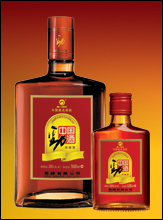 In the West we have a basic grasp of the health-related properties of red wine, especially French wine. In China, there exists a family of alcohol referred to as “保健酒” (Bao Jian Jiu); or medicinal alcohol. In fact, I’m enjoying 125ml of it while I type this post.
In the West we have a basic grasp of the health-related properties of red wine, especially French wine. In China, there exists a family of alcohol referred to as “保健酒” (Bao Jian Jiu); or medicinal alcohol. In fact, I’m enjoying 125ml of it while I type this post.
So, what’s good about it? After the 35% alcohol content, you can enjoy the benefits of 枸杞子(Gouji),仙茅(Rhizome),and 当归(Chinese Angelica), among many other common Chinese medicinal herbs…
Actually, Chinese spirits is a major industry which includes the international favorite: Mao Tai. The basis for so many kinds of Chinese alcohol comes from the domestically ubiquitous “Bai Jiu”, which is basically rice wine. (The Japanese variety is called Shōchū, while the Korean version is called Soju.) When you’ve tried Baijiu, you’ll never forget it.
The taste can do different things to different people, but most westerners tend to vomit at the smell of it. This might be the reason why these medicinal versions have become so popular. The taste is more like cough syrup than pungent dirtiness. However, the company which makes Jing Jiu (see image above), must be doing something right because they had revenues of over 4.9 billion RMB (over $790 million) in 2011 alone.[*]
Some like a Brandy after dinner while others prefer a Grappa; but no matter what your poison, alcohol is still one of the most common relics of any culture’s past.

 Custom Search
Custom Search